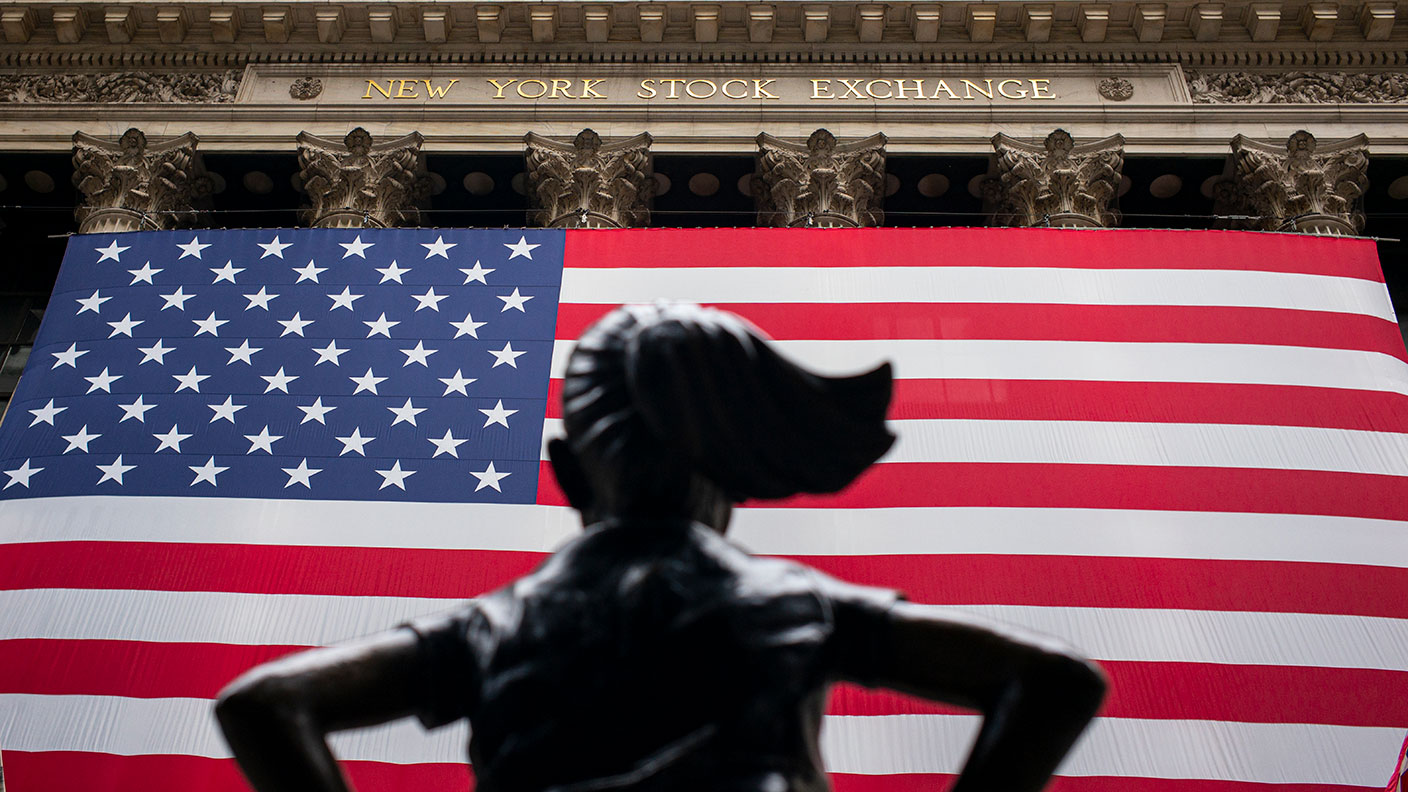This “jam tomorrow” bull market may be nearing its end
The huge run up in US tech stocks is part of the wider “jam tomorrow” bubble. John Stepek explains what that is, and why it could be about to come to a crashing end.


We’ve read a lot this week and at the end of last about Softbank being the “Nasdaq whale”. Apparently the Japanese hedge fund/private equity giant/highly-leveraged sci-fi visionary/WeWork patsy/whatever has been making big bets on US tech stocks.
All of its messing about with options (basically leveraged bets on the market) has reportedly helped to both fuel the recent surge to record highs – and the recent slide. It’s interesting stuff – but I’m not going to go into all the options malarkey this morning.
The Nasdaq has been long overdue a reality check. The real question now is – are we heading for a wider crash?
MoneyWeek
Subscribe to MoneyWeek today and get your first six magazine issues absolutely FREE

Sign up to Money Morning
Don't miss the latest investment and personal finances news, market analysis, plus money-saving tips with our free twice-daily newsletter
Don't miss the latest investment and personal finances news, market analysis, plus money-saving tips with our free twice-daily newsletter
Make no bones about it – the US stockmarket is wildly overvalued
There was a fascinating piece in yesterday’s FT from Andrew Parlin, founder of a US investment advisory firm. He was comparing today’s US stockmarket with his experiences during Japan’s bubble in the late 1980s.
You’ll have heard plenty of “US bubble” statistics by now, no doubt. But Parlin pulled out some very striking ones that just emphasise how expensive this market is.
Here’s one: 6.2% of all stocks in the US currently trade at a price/sales ratio of more than ten. We’ve only seen that surpassed once – at the peak of the dotcom bubble in March 2000, when the statistic hit 6.6%.
Why is that significant? Because a price/sales ratio of ten is really, really high. It means that for every $10 in sales – not profits – investors are willing to pay $1.
To get an idea of how unusual that is, Parlin points out that if a company trading on a price/sales ratio of ten, were to earn net profit margins of 20% – “a very high margin indeed” – its price/earnings ratio would be “an extremely expensive 50 times".
Parlin also notes that the ratio of market capitalisation to GDP (sometimes known as Warren Buffett’s favourite bubble indicator) in the US is now just under 200%. The previous high was at around 140% in the dotcom bubble – which is the same ratio Japan hit in 1989, when its bubble burst.
Don’t get me wrong. As Dominic pointed out yesterday, it’s been easier (and safer) to ignore the fundamentals in this massive bull run. And if you are trying to call the top – or at least get an idea of whether it’s time to get out – then the reality is that the only semi-useful timing indicator available to you is technical analysis (charting).
However, it is useful to remind ourselves occasionally that history indicates that this is highly unlikely to last.
This could signal the end of the “jam tomorrow” bubble
So what could end it, at a fundamental level?
Let’s have a think. The tech bubble is part of the “long duration” bubble. Or as I prefer to call it, the “jam tomorrow” bubble. This is built on the belief that money tomorrow is worth pretty much the same as it is today. It might even be worth more.
In other words, the “discount rate” – the rate at which investors reduce the value of expected future profits to account for inflation and risk – is incredibly low, or in some cases, even negative.
To put it even more simply, the view today is that a bird in the hand is not necessarily worth two in the bush. In fact, investors reckon that the two in the bush look a far more worthwhile bet.
Why are investors willing to pay so much for tech stocks? Tech stocks are broadly built on spending money today to build networks that will enable them to semi-monopolise entire business sectors tomorrow.
If money tomorrow is worth as much as money today, then you don’t care how much someone spends right now, if their future income is deemed near-infinite.
Now, even that has a limit (presumably). And one thing to remember about the current jitters in the Nasdaq is that, even by its own standards, the market had run far away and ahead of itself, and probably needed to take a breather in any case.
But has anything fundamental changed, to damage this underlying “jam tomorrow” story?
Possibly. If the Federal Reserve – America’s central bank – becomes increasingly committed to pushing inflation higher, then the “jam tomorrow” case becomes less appealing. Even if the Fed suppresses interest rates (as I suspect it will, via financial repression), higher inflation means tomorrow’s money is definitely worth less than today’s.
That undermines the “jam tomorrow” case. It means the bird in the hand starts to look more appealing once again.
So, just maybe, this is a warning sign of what happens when the market really starts to believe in the inflation case.
Now, Merryn and I discussed this on the podcast late last week. And at that point, I have to say, my gut feeling was that this isn’t “the big one”, whatever that is.
To be clear, we might well see volatility. We might even see a correction (ie, a 10%-plus drop in the market). But I can see the Fed getting rattled by this and trying to step in to reassure the market somehow.
However, as and when we start to see inflation genuinely perk up, and we then see that the Fed is genuine about not doing anything about it – well then we might see a much bigger reaction.
If you’re not already a subscriber to MoneyWeek magazine, do sign up now - the next few months promise to be interesting. Get your first six issues free here.
Get the latest financial news, insights and expert analysis from our award-winning MoneyWeek team, to help you understand what really matters when it comes to your finances.
John Stepek is a senior reporter at Bloomberg News and a former editor of MoneyWeek magazine. He graduated from Strathclyde University with a degree in psychology in 1996 and has always been fascinated by the gap between the way the market works in theory and the way it works in practice, and by how our deep-rooted instincts work against our best interests as investors.
He started out in journalism by writing articles about the specific business challenges facing family firms. In 2003, he took a job on the finance desk of Teletext, where he spent two years covering the markets and breaking financial news.
His work has been published in Families in Business, Shares magazine, Spear's Magazine, The Sunday Times, and The Spectator among others. He has also appeared as an expert commentator on BBC Radio 4's Today programme, BBC Radio Scotland, Newsnight, Daily Politics and Bloomberg. His first book, on contrarian investing, The Sceptical Investor, was released in March 2019. You can follow John on Twitter at @john_stepek.
-
 Football fans issued warning over ticket scams ahead of 2026 World Cup
Football fans issued warning over ticket scams ahead of 2026 World CupSantander customers lost more to football scams in the first six months of 2025 compared to the same period in 2024, when total losses surged due to the Euros
-
 Nationwide fined £44 million over “inadequate” anti-money laundering systems
Nationwide fined £44 million over “inadequate” anti-money laundering systemsFailings in Nationwide’s financial crime processes between October 2016 to July 2021 meant one criminal was able to deposit £26 million from fraudulent Covid furlough payments in just eight days.
-
 What's behind the big shift in Japanese government bonds?
What's behind the big shift in Japanese government bonds?Rising long-term Japanese government bond yields point to growing nervousness about the future – and not just inflation
-
 Halifax: House price slump continues as prices slide for the sixth consecutive month
Halifax: House price slump continues as prices slide for the sixth consecutive monthUK house prices fell again in September as buyers returned, but the slowdown was not as fast as anticipated, latest Halifax data shows. Where are house prices falling the most?
-
 Rents hit a record high - but is the opportunity for buy-to-let investors still strong?
Rents hit a record high - but is the opportunity for buy-to-let investors still strong?UK rent prices have hit a record high with the average hitting over £1,200 a month says Rightmove. Are there still opportunities in buy-to-let?
-
 Pension savers turn to gold investments
Pension savers turn to gold investmentsInvestors are racing to buy gold to protect their pensions from a stock market correction and high inflation, experts say
-
 Where to find the best returns from student accommodation
Where to find the best returns from student accommodationStudent accommodation can be a lucrative investment if you know where to look.
-
 The world’s best bargain stocks
The world’s best bargain stocksSearching for bargain stocks with Alec Cutler of the Orbis Global Balanced Fund, who tells Andrew Van Sickle which sectors are being overlooked.
-
 Revealed: the cheapest cities to own a home in Britain
Revealed: the cheapest cities to own a home in BritainNew research reveals the cheapest cities to own a home, taking account of mortgage payments, utility bills and council tax
-
 UK recession: How to protect your portfolio
UK recession: How to protect your portfolioAs the UK recession is confirmed, we look at ways to protect your wealth.
